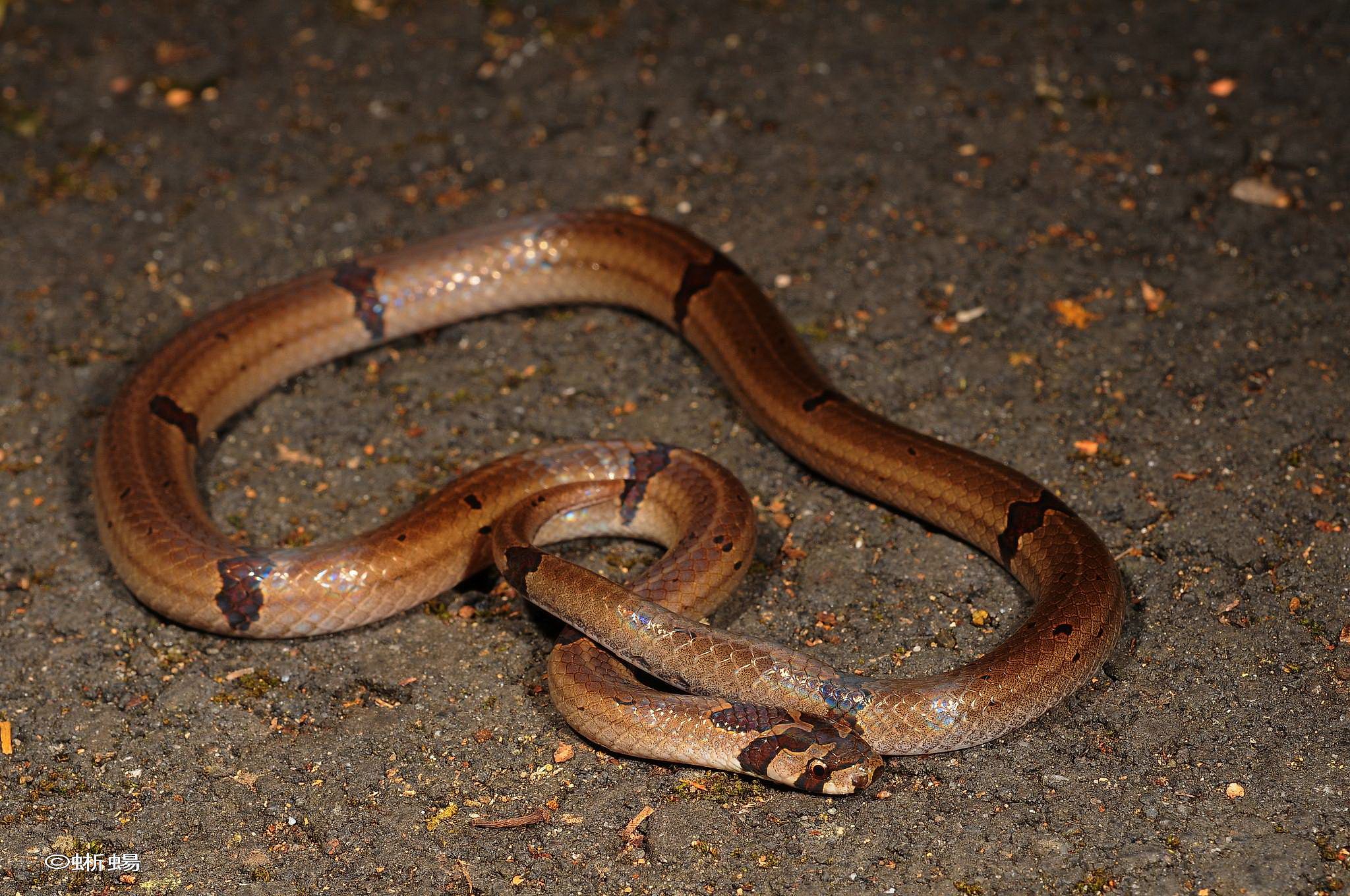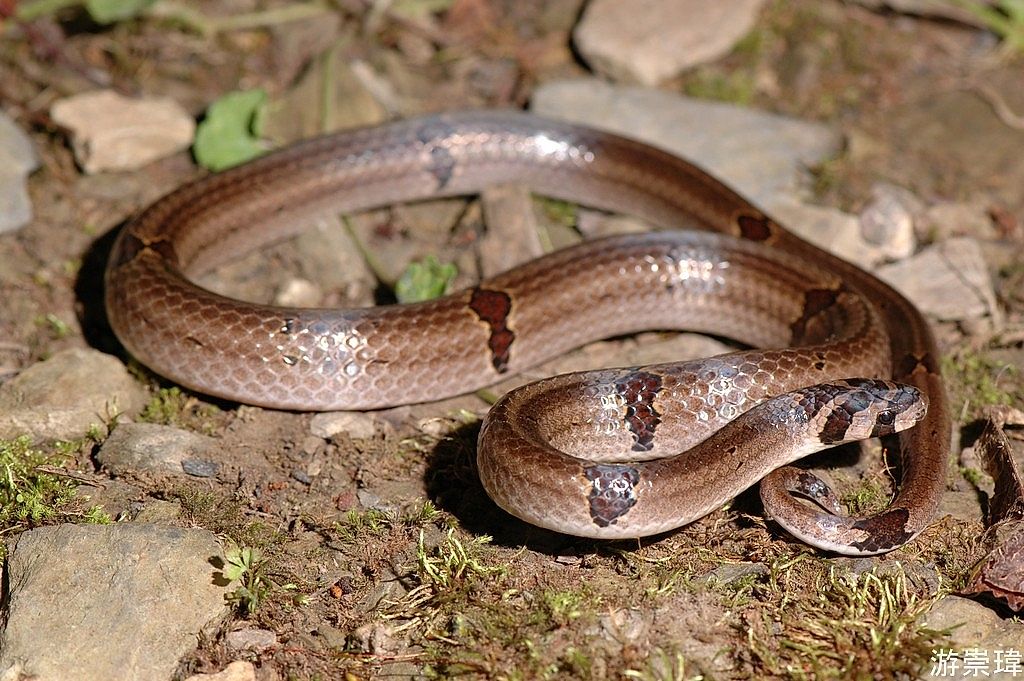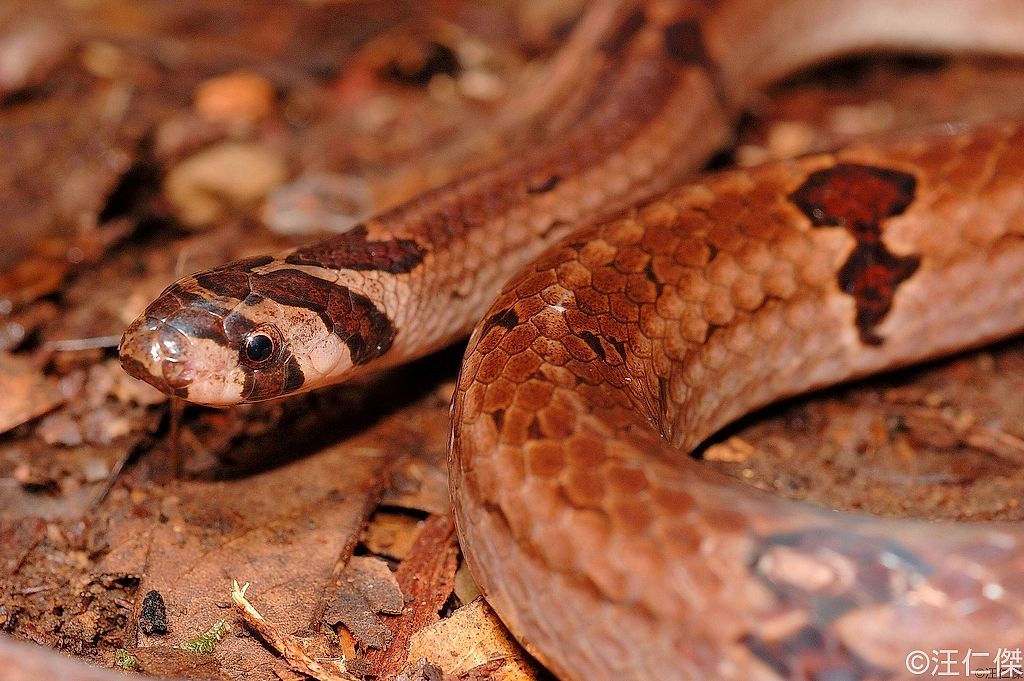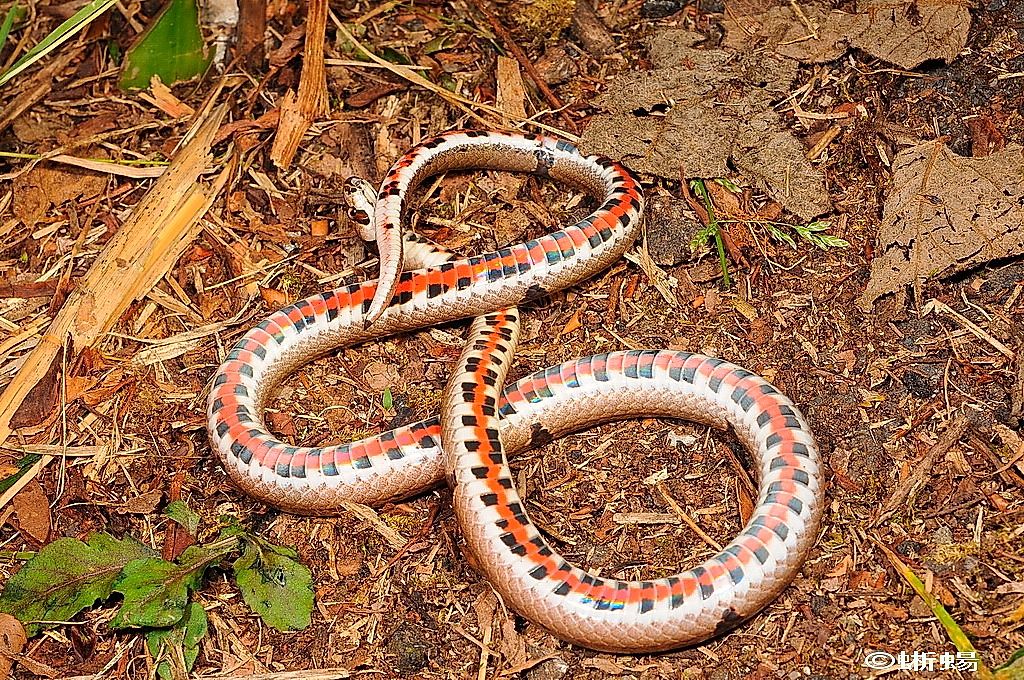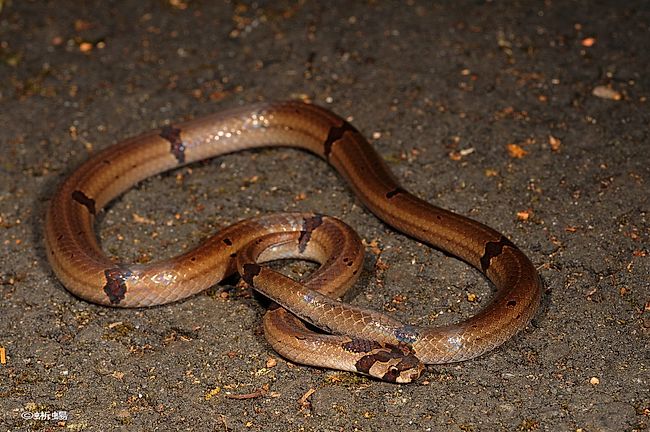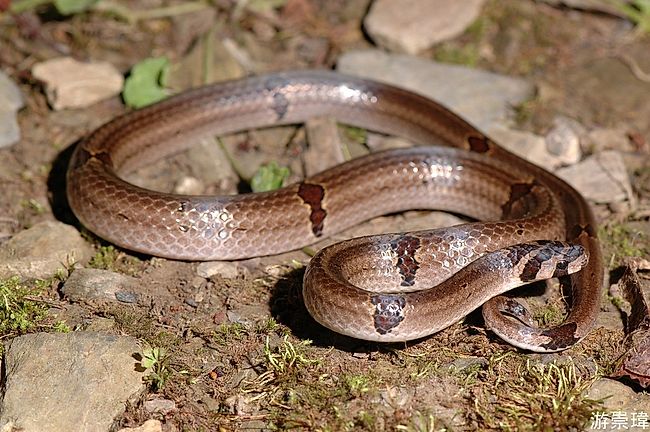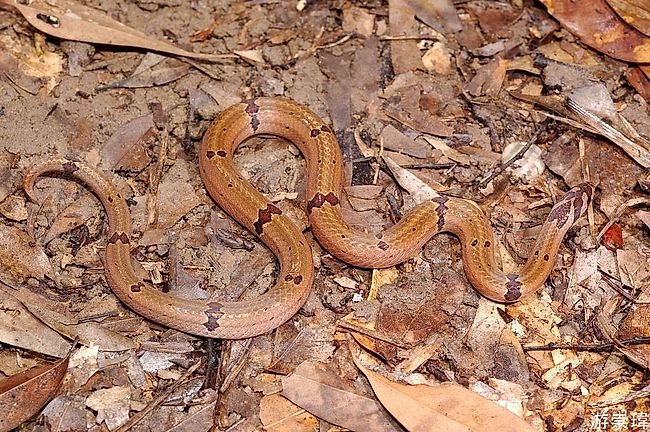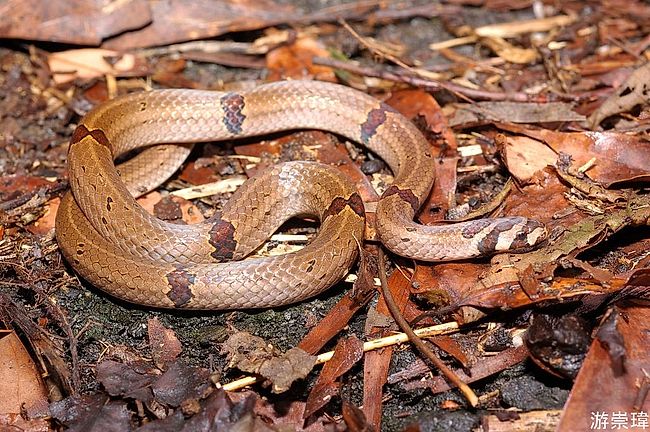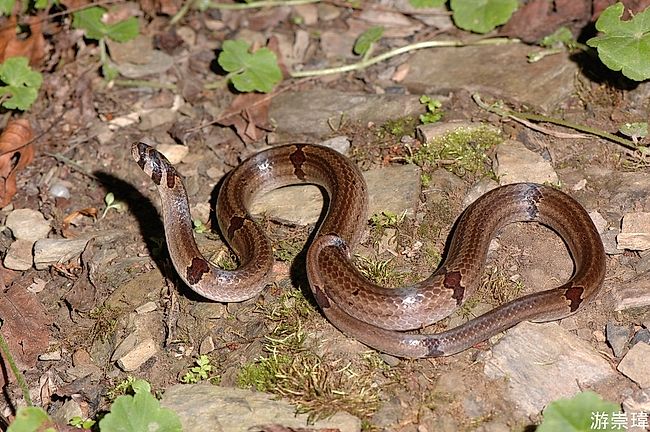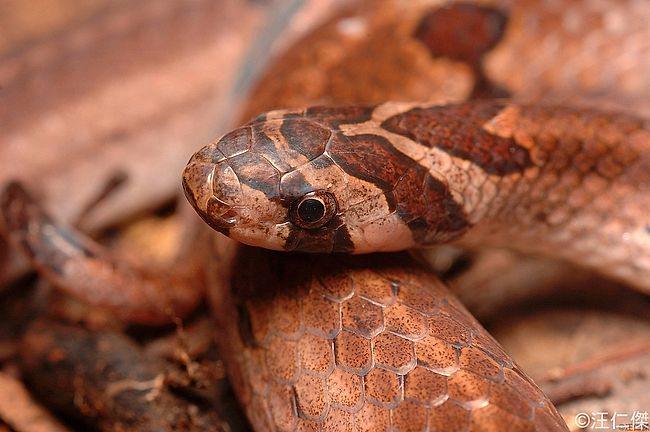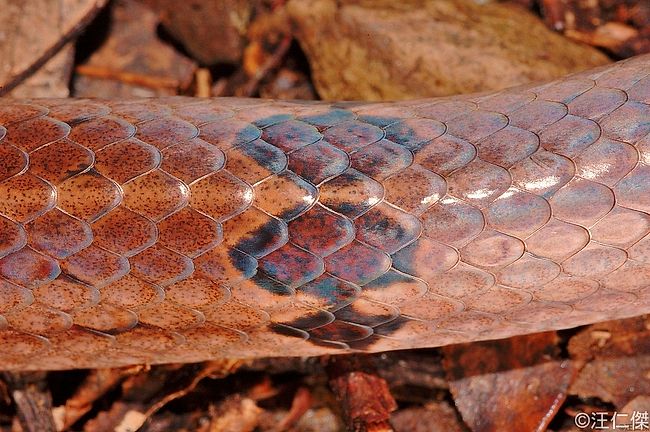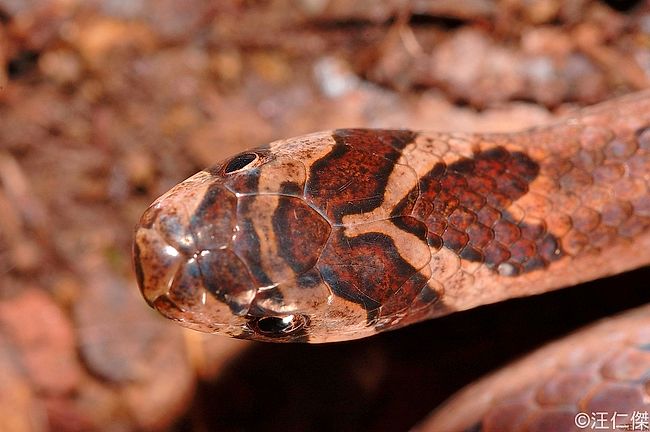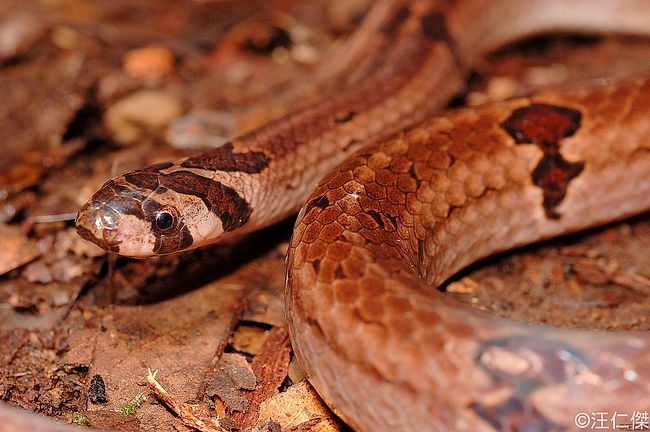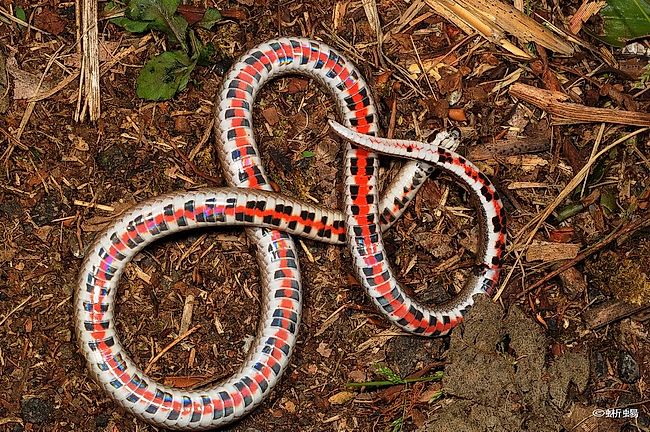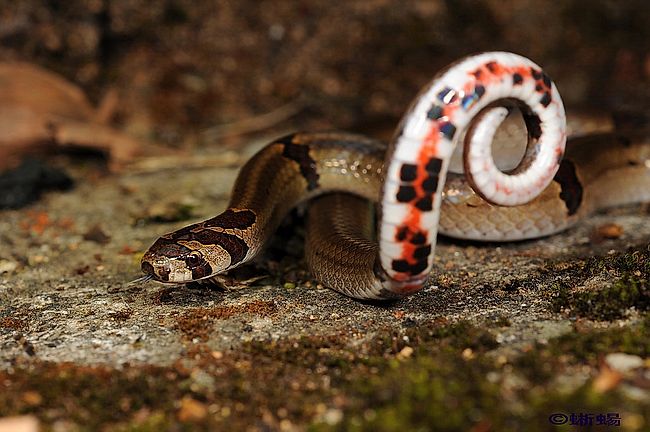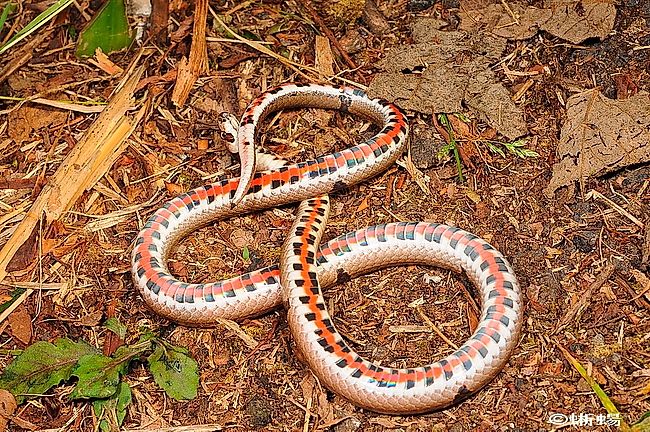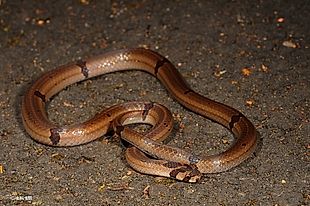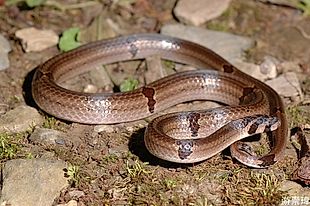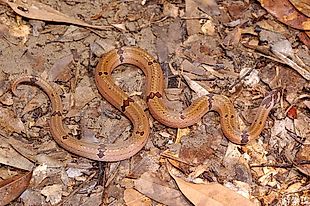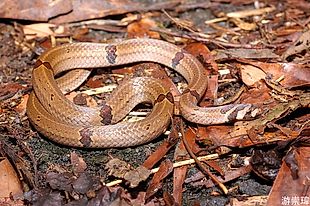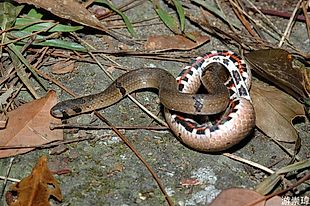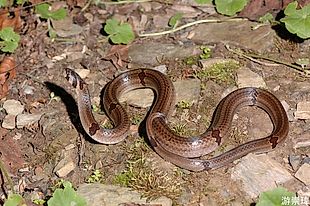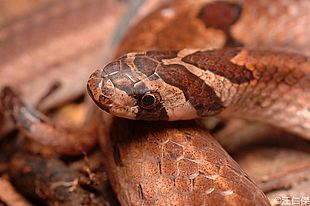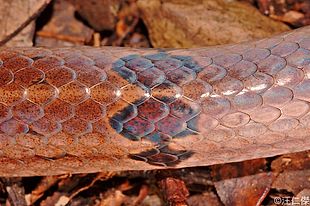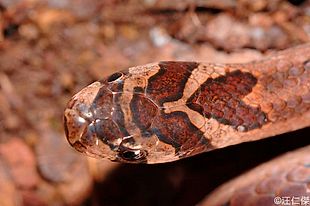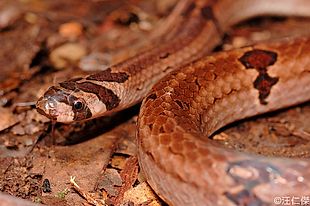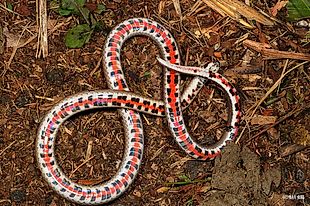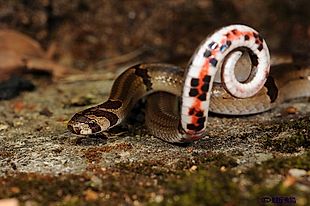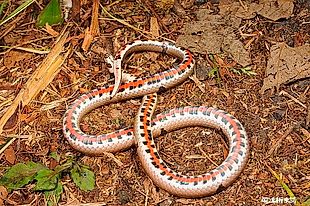Oligodon ornatus
Ornate (Red-bellied) Kukri Snake
赤腹松柏根 (chi4fu2song1bo2gen1)
Status: Not Protected
Non-venomous
Field Report
More Photos
Family
Colubridae, subfamily Lycodontinae
Max. length
80 cm
Occurrence in Taiwan
Northern and central Taiwan, at altitudes of 500-1000 m. Endangered.
Global Distribution
South China (Sichuan, Hunan, Fujian, Anhui, Guangxi, Jiangxi, Zhejiang), Taiwan.
Description
Small snake; total length up to 80 cm. There are 15 rows of smooth scales. It has a short, indistinct head bearing a large rostral shield; body is stout and round, tail moderately short. Eye is medium-sized; iris is dappled light brown, with scattered black pigment which is part of the black stripe on head, and pupil is round, black, with narrow ring of orange red. Tongue is flesh-colored flecked with black pigment, fork tips darker than stem. Upper head is light brown with symmetrical designs of dark-brown which include 1) a stripe passing from the front of head, through eye, to the supralabial, 2) a stripe extending from the top of head postero-laterally to base of jaw, and 3) a heart-shaped, forward pointing spot at back of head. The labials are dirty white to light brown. Upper body is light brown with irregular shaped but regularly arranged designs; there are eight dark brown prominent sawtooth bands, evenly separated and alternating with spots of dark brown which form partial bands. There may also be two pairs of indistinct longitudinal stripes along body; two thick ones on vertebral line and two thin ones on the flanks. Ventral head is white to light gray, with areas of dark pigmentation. Ventral body is white to light gray with scattered quadrangular marks of prominent black pigment which are irregularly arranged on sides of prominent orange-red midventral line. The designs of ventral body extend onto anterior half of ventral tail. Anal scale is divided and subcaudals are paired.
Biology & Ecology
This cathemeral (diurnal or nocturnal) snake inhabits mountainous regions or plantations. It preys mainly on reptile eggs; the large, laterally flattened posterior teeth in the upper jaw and the large rostral shield are adapted to cut open and thrust into the eggs. Oviparous.
"Snakes that specialize on the eggs of birds usually swallow eggs whole then crush them. Oligodon instead uses enlarged, blade-like rear maxillary teeth to make repeated slashes in the leathery egg shell, inserts its head, and swallows the yolk. The mechanics of cutting involve cycles of extreme displacement of the maxillary bone, whose blade-like teeth are swung in arcs to make ever deeper slashes in the shell until a slit is formed. The cycles during cutting involve protraction, engagement, and retraction of the palatomaxillary arch of one side while the contralateral jaws maintain a continuous hold on the egg surface". (Source)
Kukri snakes derive their name from the above-mentioned blade-like teeth that resemble the famous kukri dagger of Nepal's Gurkha soldiers. In defense, these teeth are used in a slashing manner which can cause gaping wounds that may bleed profusely - probably an effect of the snake's saliva which is rumored to possess anticoagulant qualities.
When disturbed and threatened, Oligodon ornatus may put on quite a show of theatrics, including open display of its hemipenes,as well as tail coiling and thrashing.
Etymology
Kukri snakes derive their name from their blade-like teeth that resemble the kukri dagger of Nepal's Gurkha soldiers.
Oligodon: oligos is Greek for "few, scanty"; odont means "tooth"; referring to the low number of teeth in the upper jaw.
ornatus is Latin for "ornate".
The Chinese name 赤腹松柏根 (chi4fu4song1bo2gen1) means "Red-bellied (赤腹) Pine Root (松柏根)".
Footnotes
(1) "Opisthoglyphous snakes are similar to aglyphous (fangless) snakes, but possess weak venom, which is injected by means of a pair of enlarged teeth at the back of the maxillae (upper jaw). These "fangs" typically point backwards rather than straight down, possess a groove which channels venom into the prey, and are located roughly halfway back in the mouth, which has led to the vernacular name of "rear-fanged snakes". (Source)
Further Info
